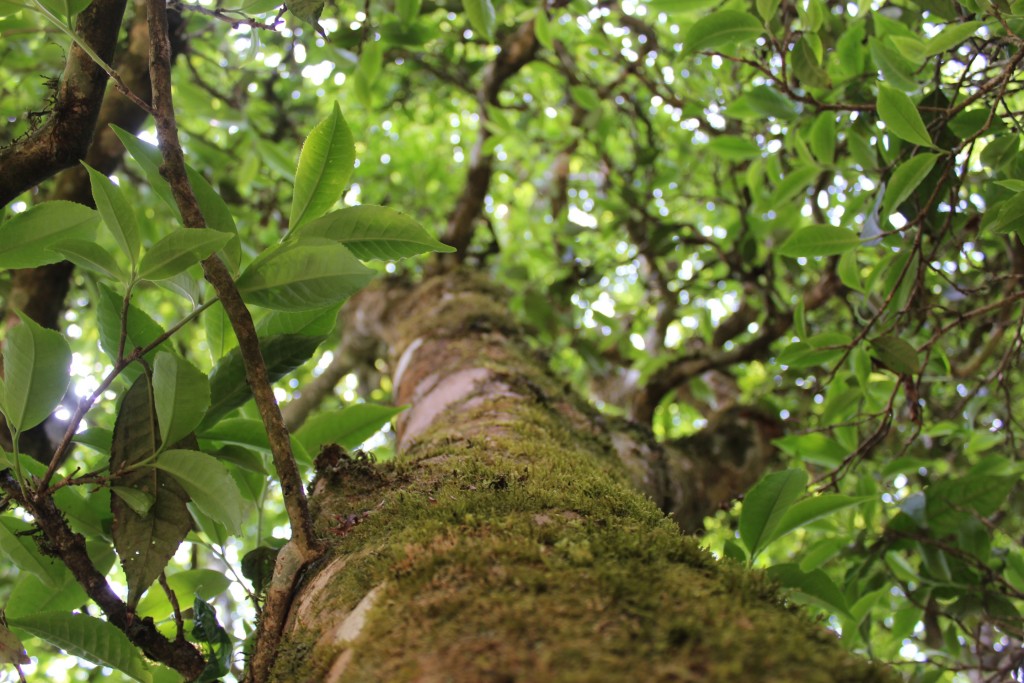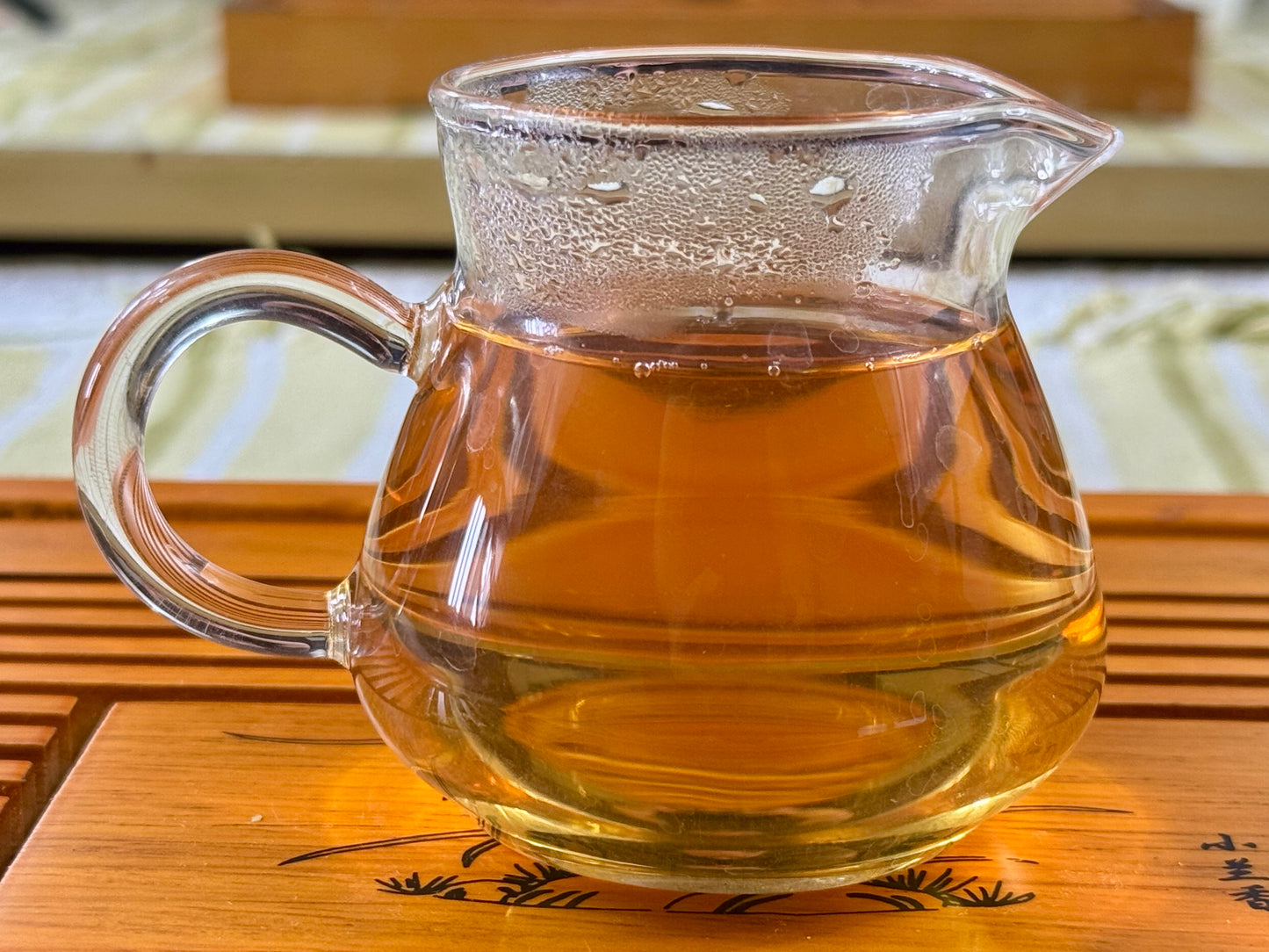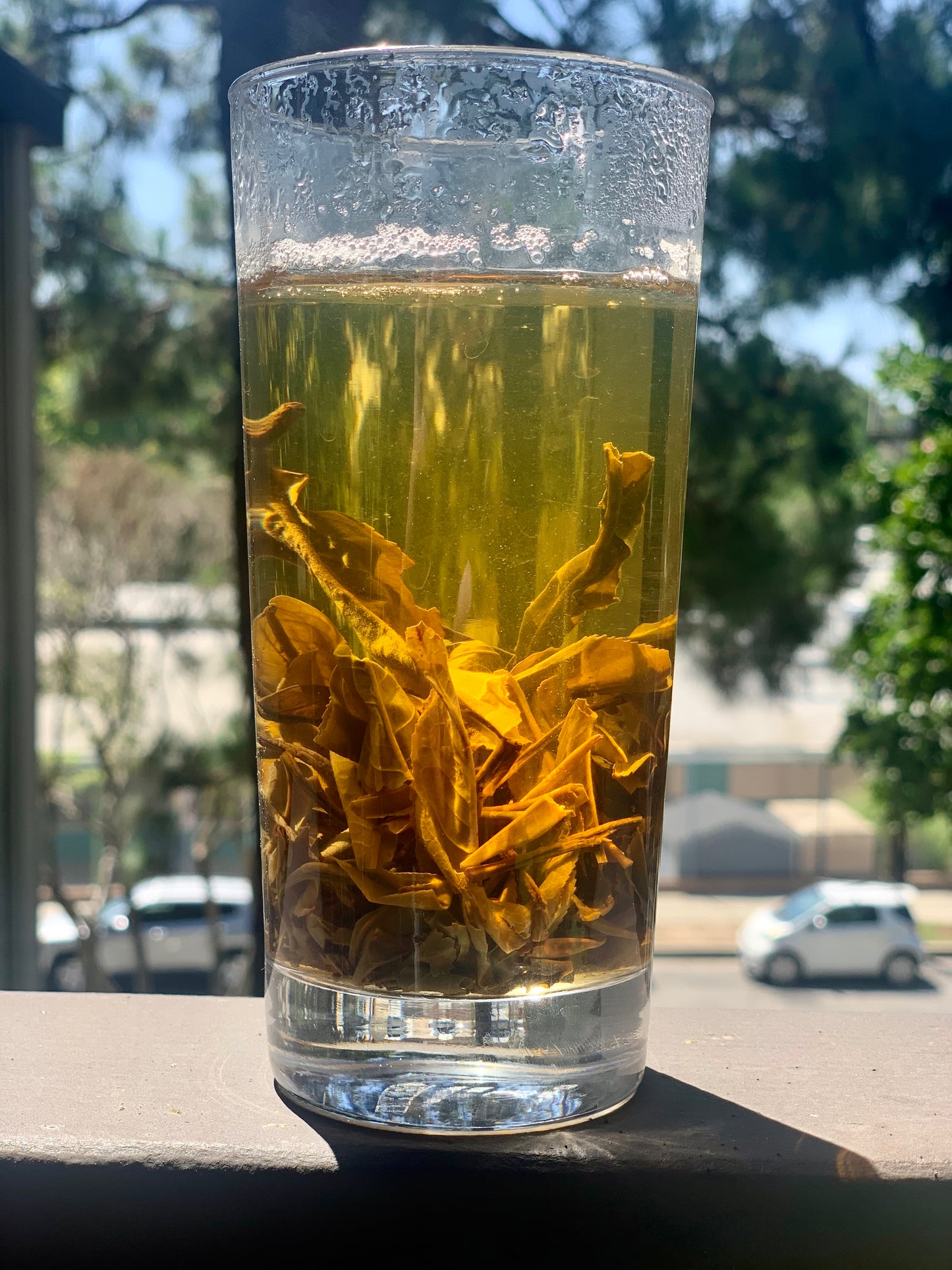Raw Pu’er Supreme Tea
Raw Pu’er Supreme Tea
Couldn't load pickup availability
Raw Pu’er Supreme – Pasha Gushu Loose-Leaf Sheng (帕沙古树生普洱)
Ancient Tree Raw Pu’er from Menghai, Yunnan – Loose Leaf, Not Pressed
Bright, deep, and alive—unfolding the spirit of the mountain.
This Supreme Raw Pu’er (生普洱, Shēng Pǔ’ěr) is crafted from ancient tea trees (古树, gushu) over 100 years old, growing on the sacred slopes of Pasha Mountain (帕沙山) in Menghai County, Yunnan. Harvested and processed entirely by hand, this loose-leaf Sheng Pu’er offers a rare clarity of origin, strength, and energy.
Unlike most Pu’er teas that are tightly pressed into cakes, this tea remains uncompressed, allowing it to age more quickly and breathe more freely. The result is a tea that feels alive, complex, and ever-changing—a true collector's Sheng with deep mountain Qi and radiant presence.
If you'd like to know what drinking this tea is like, you can read this: Raw Puer - A Taste of the Wilderness.
Why You’ll Love This Pasha Gushu Sheng
- From 100+ year-old trees (古树, gushu) on Pasha Mountain
- Loose-leaf format—naturally aging and expressive
- Strong, clean Qi (茶气) with cooling brightness and depth
- Floral, fruity, and mineral-rich with long aftertaste
- Crafted for aging, meditation, and high-level enjoyment
Tasting Notes
• Wild orchid, pine bark, and green apricot
• Crisp minerality with gentle bitterness that transforms into sweetness
• Notes of stone fruit skin, camphor, and cool mountain mist
• Clean, bright finish with returning sweetness (回甘, huí gān) and steady inner warmth
Tea Profile
• Type: Supreme Raw Pu’er (Sheng Cha, 生茶)
• Form: Loose-leaf (unpressed)
• Origin: Pasha Mountain, Menghai County, Xishuangbanna, Yunnan, China
• Cultivar: Yunnan Da Ye Zhong (大叶种) – Ancient Tree (Gushu)
• Elevation: 1,600–1,800 meters
• Processing: Traditional Sheng method: pan-firing, sun-drying, hand-rolling
• Appearance: Large twisted olive-green leaves with silvery buds; bright gold liquor
• Collected: 2019
Loose-Leaf vs Pressed Pu’er – Why It Matters
Most Pu’er teas are pressed into cakes—a tradition born from old trade routes. But in today’s world, pressing is no longer necessary, and loose-leaf Pu’er has its own advantages:
- Ages faster and more evenly than dense compressed cakes
- Easier to store, inspect, and brew without breaking leaves
- Lower cost than pressed tea of the same quality—no labor or mold required for pressing
- Allows the full aroma and transformation of the leaf to emerge naturally
In the case of high-quality ancient tree Pu’er, leaving it loose helps preserve its delicate fragrance and structure—giving you the clearest window into the tea’s soul.
Storage & Quality Insight
The quality of Raw Pu’er is determined not just by age, but by:
- Leaf source – Gushu from Pasha is among the finest in Menghai
- Processing and care – Clean, traditional techniques matter
-
Storage conditions – Airflow, odor control, temperature, and light must be correct
Poor storage can ruin even the best leaves. That’s why we only offer Pu’er that meets the highest standards of origin and preservation.
More about Raw Puer and its production.
Health Benefits
• Gently stimulates the mind and digestion
• High in polyphenols, catechins, and natural enzymes
• Promotes clear energy and long-lasting focus
• Excellent coffee alternative—uplifting without harshness
• Especially good for warming and nourishing the body in cooler months
Brewing Instructions
Gongfu Method (5 oz / 150 ml)
- Tea amount: 5–6 grams
- Water temperature: 95–100°C / 203–212°F
- Rinse: Brief rinse (5 seconds)
- Infusions:
- 1st: 15–20 sec
- 2nd: 25–30 sec
- 3rd–8th: Increase time slightly with each brew
- Tip: Best brewed in porcelain or unglazed clay teaware to explore layers
Cup Method (8.8 oz / 250 ml)
- Tea amount: Adjust based on personal preference for tea strength.
- Water temperature: 95°C / 203°F
- Steep time: 2–3 minutes
- Re-steep: 2–3 times
- Note: Use cooler water or shorter time for a lighter, more floral experience
Cultural Significance
Pasha Mountain is part of one of the oldest Pu’er-producing regions in Yunnan. For centuries, its tea trees have been cultivated by local ethnic communities and passed down through generations. Gushu from Pasha is known for its bold energy and sweet character—a tea that resonates with wisdom and life.
This loose-leaf, Supreme Raw Pu’er is rare, vibrant, and deeply alive. A tea of spirit, strength, and serene depth.
Share











This Pasha sheng starts out with incredible powdered-sugar sweetness, then blooms into plumblossom, stone fruit, apple, and apricot notes, before ending with some intriguing darker notes of musk, leather, and nectarine pit. The whole bouquet is balanced and super engaging. This tea has a lot of playful character. A delight.












